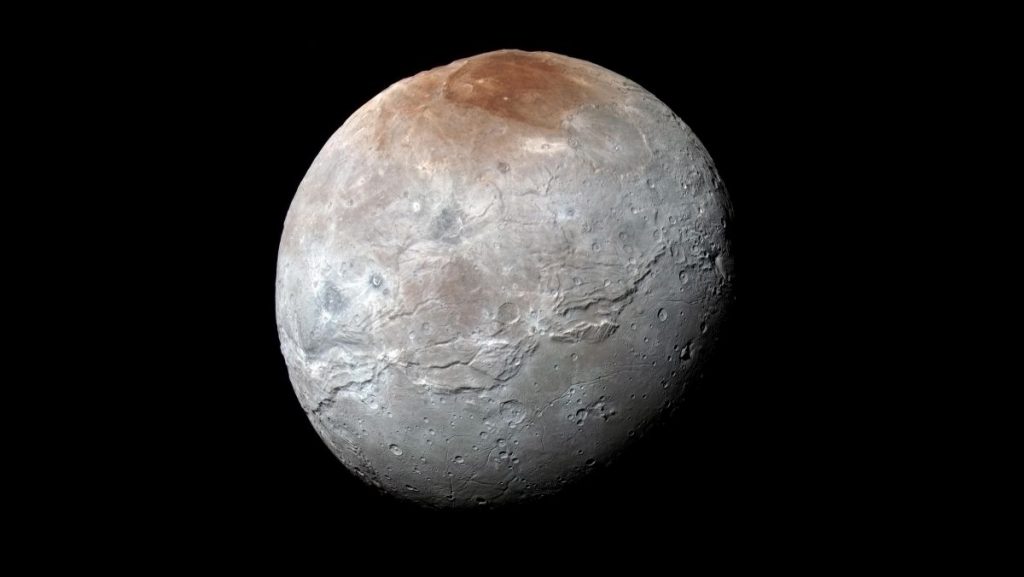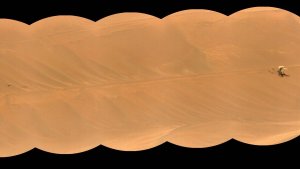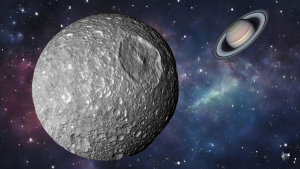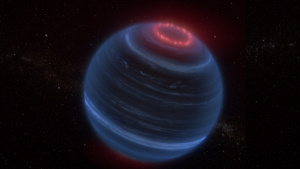
Scientists have figured out why Pluto’s moon Charon wears a red cap.
New laboratory work shows that the color results when ultraviolet light and the solar wind interact with hydrocarbons and turn them into a soup of organic compounds dubbed tholins.
Until NASA’s New Horizons spacecraft flew past Pluto in 2015, little was known about Charon, which is Pluto’s largest moon, with a diameter of about 750 miles (1,200 kilometers). But New Horizons‘ close-up images revealed a frozen world with a ruddy-colored polar cap in the moon’s northern hemisphere.
Related: Pluto flyby photos: New Horizons mission leader reveals 10 of his favorite epic views
At the time, scientists thought the red cap was produced when ultraviolet light from the faraway sun broke down molecules of methane that had escaped Pluto and been captured by Charon. That reaction resulted in “tholins,” a term Carl Sagan coined to refer to a soup of organic compounds. However, new research described in two papers by scientists at the Southwest Research Institute (SwRI) in Texas shows that the process that forms the tholins is a little more convoluted.
“Our findings indicate that drastic seasonal surges in Charon’s thin atmosphere, as well as light breaking down the condensing methane frost, are key to understanding the origins of Charon’s red polar zone,” SwRI’s Ujjwal Raut, a planetary scientist and lead author of one of the new papers describing the new findings, said in a statement.
In experiments at SwRI’s Center for Laboratory Astrophysics and Space Science Experiments, scientists recreated the surface conditions on Charon, such as its ability to trap methane on its surface, and methane’s sublimation rate when warmed, and then plugged their results into a dynamic model describing Charon’s thin methane atmosphere, or exosphere.
They found that Charon’s atmosphere is inactive for centuries as Pluto and its five moons laboriously continue on their long orbit around the sun. During this time, Charon’s surface temperatures linger as low as minus 433 degrees Fahrenheit (minus 258 degrees Celsius). Those conditions change around the time of Pluto’s equinox, which most recently occurred in 1988 to 1989.
During the equinox period, Charon experiences a surge of activity that lasts just four Earth years, with the moon’s surface warming to minus 406 F (minus 243 C). Methane frozen at the pole in the hemisphere experiencing spring rapidly sublimates, creating a short-lived exosphere. The methane gas in the exosphere migrates to the hemisphere experiencing autumn, where it refreezes. (That’s the theory, anyway, since scientists have only gotten a good look at the north pole.)

When ultraviolet light from the distant sun interacts with the frozen methane at the poles before it sublimates, it turns some of the methane into ethane. Because of its higher sublimation point, ethane remains frozen while the methane turns into a gas. However, ethane is colorless, so it cannot be the direct cause of the red color. Once the methane has sublimated, though, the solar wind can interact directly with the ethane left behind and catalyze chemical reactions that turn the ethane into a cornucopia of organic compounds — the tholins.
“Exposure to the solar wind may convert ethane into persistent reddish surface deposits, contributing to Charon’s red cap,” Raut said. “This is one of the most illustrative and stark examples of surface-atmospheric interactions so far observed at a planetary body.”
Understanding the chemistry of objects in the distant outer solar system has relevance to life here on Earth. Life’s building blocks include many of the organic compounds formed through the interaction of hydrocarbons with energy from the sun. Indeed, many of those organic compounds may have been brought to Earth by the impacts of comets hailing from the region near Pluto. By learning how Charon produces those compounds, we may catch a glimpse into the origin of the molecules that helped make life on Earth.
The research was published in two papers: one on April 15 in the journal Geophysical Research Letters, and the other on June 17 in the journal Science Advances.
Follow Keith Cooper on Twitter @21stCenturySETI. Follow us on Twitter @Spacedotcom and on Facebook.





